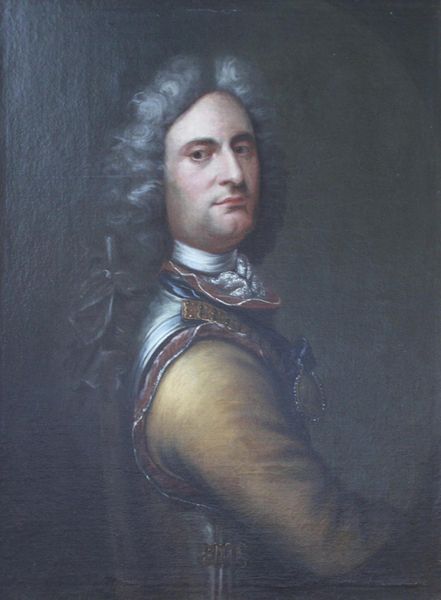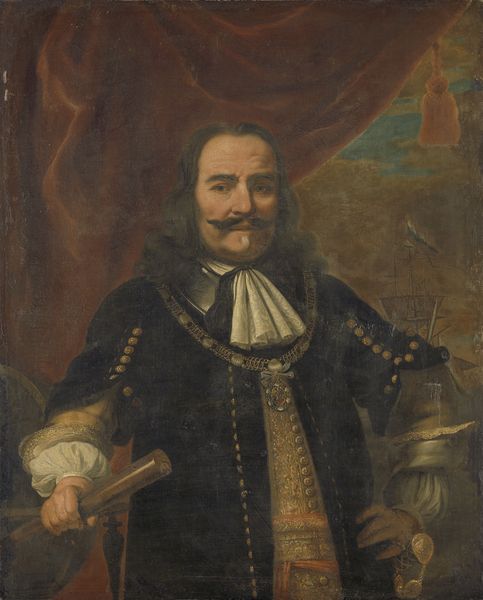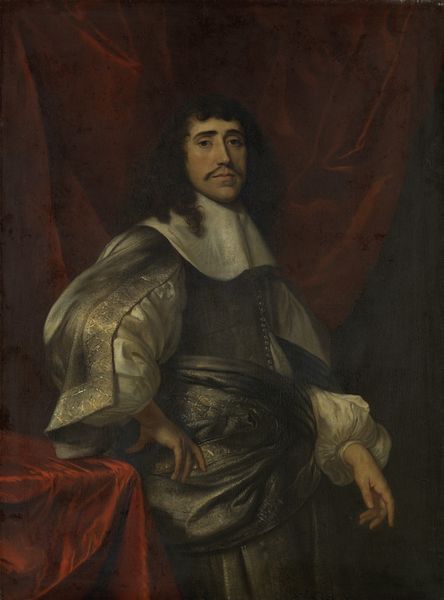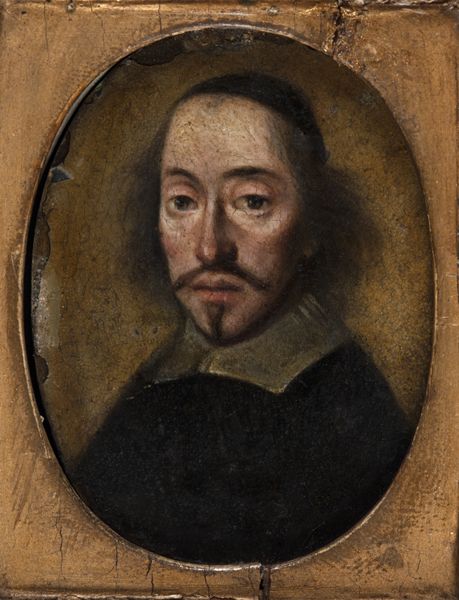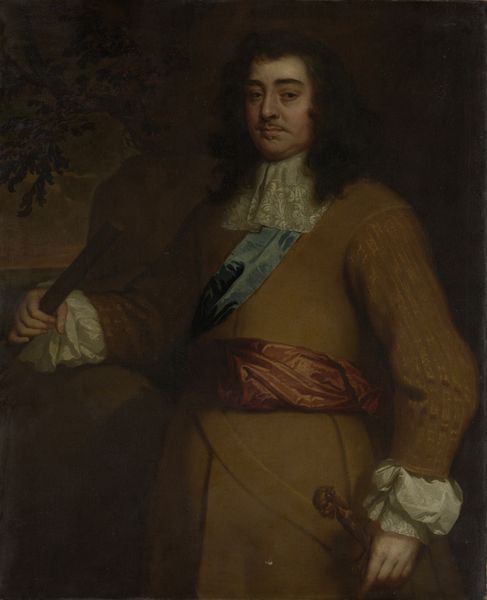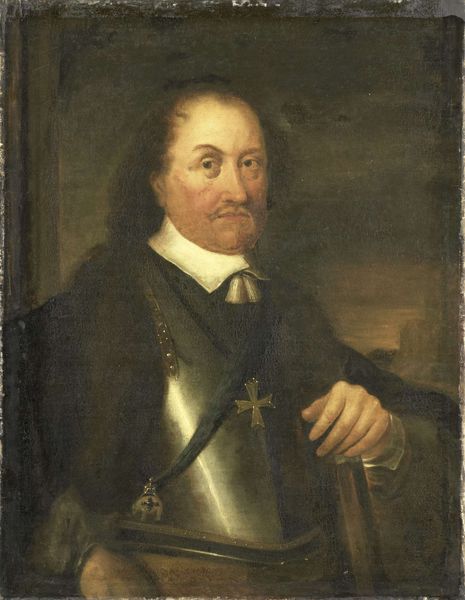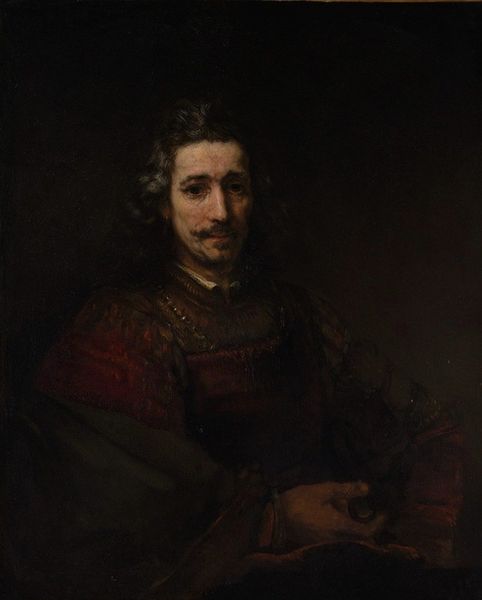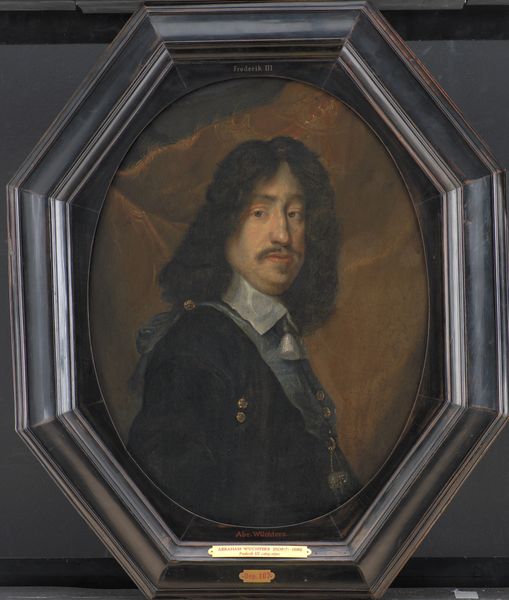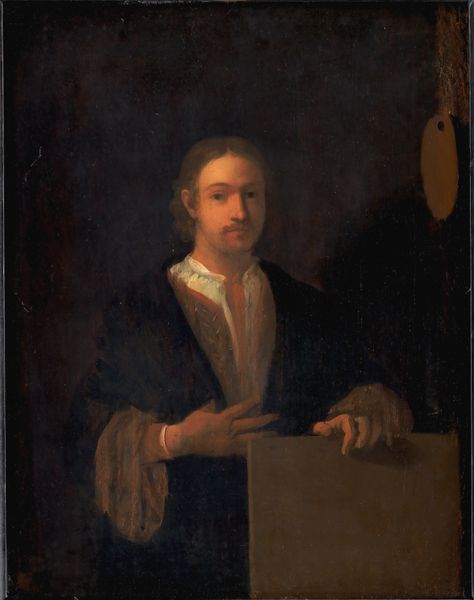
oil-paint
#
portrait
#
baroque
#
oil-paint
#
history-painting
#
academic-art
Dimensions: height 110 cm, width 91 cm, depth 5 cm
Copyright: Rijks Museum: Open Domain
Editor: We're looking at a portrait of *Peter the Great, Tsar of Russia*, made sometime between 1700 and 1749, by an anonymous artist, using oil paints. It’s currently housed here at the Rijksmuseum. The somber tones create quite a serious atmosphere, I think. How do you interpret this work? Curator: The weight of autocratic rule hangs heavy here. Peter’s portrait isn’t just about depicting a man, but legitimizing a historical figure who forcibly modernized Russia, often through violence and oppression. Think about what “modernization” meant then. Editor: It sounds like Westernization? Curator: Exactly. Peter looked Westward and tried to graft European systems onto Russian soil. His reforms impacted everything from military organization to social etiquette, even dress codes. What do you make of his armor, versus say, ermine robes? Editor: That seems... performative. Is he presenting himself as a man of action, a warrior king instead of a noble ruler? Curator: Precisely! And consider the subtle power dynamics: Who commissioned this work, and for what purpose? Was this image designed to inspire loyalty, or perhaps, fear? Look at other contemporary depictions and ask what social narrative they build. Editor: So, instead of just admiring the technique, we should analyze what the portrait *does* within its historical context? Curator: Exactly. Art isn't created in a vacuum, but within socio-political landscapes. This piece is fascinating not for what it shows, but what it tells us about power, representation, and the construction of national identity. Editor: That’s really changed how I see this portrait. It's not just paint; it's a political statement frozen in time. Curator: Indeed. Hopefully you will consider such contexts and layers in future work.
Comments
No comments
Be the first to comment and join the conversation on the ultimate creative platform.

